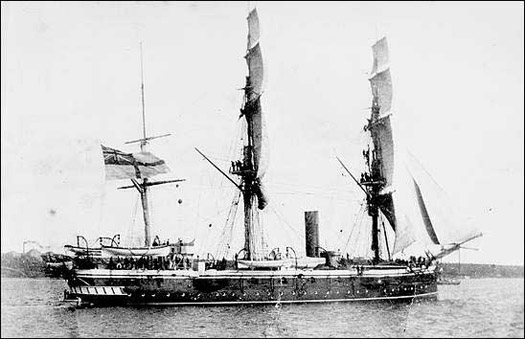The Benefits of Empire

During the war, the Admiralty was concerned with the economic consequences to shipping of calling up large numbers of reservists. Dominion reservists, many of whom were fishermen and merchant seamen, were used for manpower on some of the Royal Navy's extra ships. For instance, Newfoundlanders were drilled on the HMS Calypso, and onshore at a rifle range, and at Fort Amherst; they were then sent to Britain, where they were employed in a number of roles, including salvage, blockade and minesweeping. Others were sent to HMS Prince Edward, a paddleboat that deployed anti-submarine nets. The Canadian government also responded with the Atlantic Drifter Patrol. Many seafarers remained in Newfoundland as part of this patrol. Lacking enough small armed ships to patrol Canada's east coast, the Royal Canadian Navy employed a coastal watch to monitor for enemy action. Canada supplied the motor craft while Newfoundland provided experienced fishing crews. In 1916, the patrol was enlarged by the addition of armed patrol vessels and 600 Newfoundlanders based out of St. John's. (Hunter, 119)
For the Admiralty, Newfoundlanders offered the skills acquired from working in small-boats in the rough seas of the North Atlantic. Already by 1915, 1,000 Newfoundland reservists augmented the crews of support vessels in European and Mediterranean waters. (120) The reservists manned smaller trawlers and boats that helped enforce the blockade of Germany. They were often placed in great peril. Many Newfoundlanders, including men who might have been merchant seafarers in peacetime, served with the Tenth Cruiser Squadron on patrol in the North Sea to stop trade between Germany and Scandinavia. These armed merchant ships would fan out from Britain to patrol for vessels that had violated the blockade. When a suspect ship was sighted, the captain dispatched a boarding officer and crew to inspect the ship. Newfoundland reservists often manned such launches.
As part of the Trawler Division, Newfoundlanders trained in minesweeping techniques were deployed to Gallipoli, the Mediterranean and to home waters. 200 Newfoundland reservists were incorporated into the unit, but they maintained their distinctive Newfoundland kit and identification numbers. Skippers were paid an annual retainer of £10, and they underwent four days of training every other year. Deck hands were paid £4 and enginemen £8. Reservists received only 70 cents per day, $1 per day less than members of the Newfoundland regiment and other naval reservists. (132)
Many of the ships Newfoundlanders were deployed on were unstable. Stephen Dicker from Flat Island, Bonavista Bay, joined the HMS Clan MacNaughton on January 19, 1915 and voiced discontent about working conditions: "Anyone that has experienced a month at sea in a boat like this will say that the landsmen has got a blessing." (130) One month later, the HMS Clan MacNaughton was sunk with the loss of all 261 on board, including 23 Newfoundlanders. In total, during the war, 192 reservists and 117 merchant sailors from Newfoundland perished. (129)
